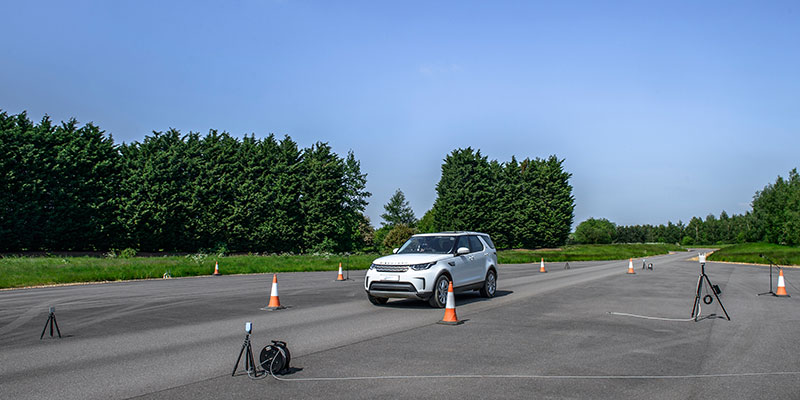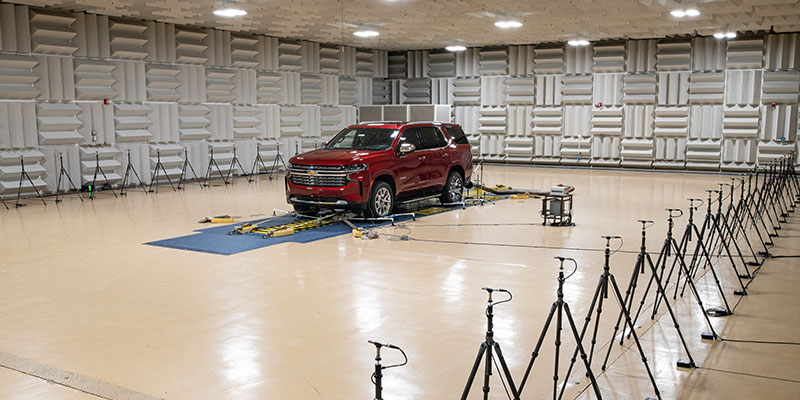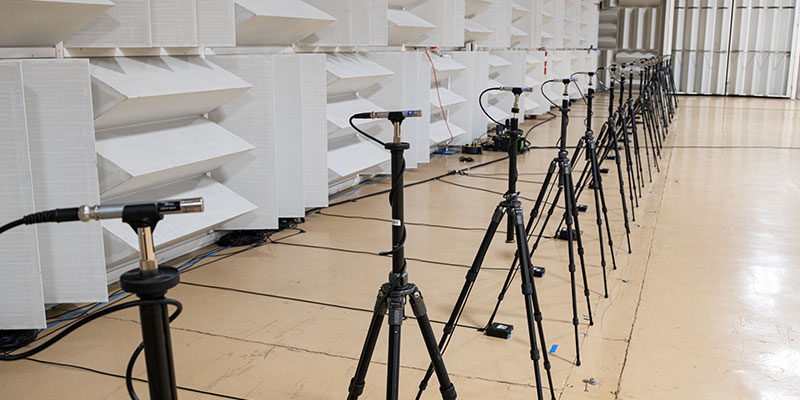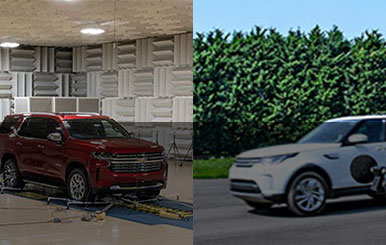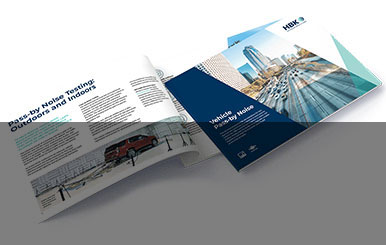Exposure to excessive traffic noise has become a major health concern for citizens in urban environments and can lead to effects such as headaches, sleep disturbance, stress, high blood pressure, and an increased risk of heart disease. Countermeasures are therefore needed for both the noise source (vehicles) and the transfer paths (for example, noise barriers).
CONTENT
To control vehicle noise emissions, vehicle manufacturers are required to measure pass-by noise according to the regulations to ensure that their vehicle noise emissions are within the prescribed limits. The regulations are coordinated by the United Nations Economic Commission for Europe (UNECE) Working Party on Noise and Tyres for its 56 member States in Europe, North America and Asia, who then adopt regulations locally, with some countries applying even stricter noise limits and additional procedures.
For manufacturers of passenger cars, truck and buses, Regulation 51 (categories M and N) is the regulation that manufacturers must adhere to, whereas manufacturers of motorcycles must adhere to Regulation 41 (vehicle category L3). Both regulations are very similar although there is some difference in the calculations.
Tests for homologation (vehicle type approval) are normally carried out on an outdoor test track; this is known as field pass-by (FPB) testing. For both regulations, the vehicle drives down the centre (reference) line of the track, passing microphones placed on either side at a distance of 7.5 m from the centre line. The position where the noise is highest is reported according to the rules specified in the regulations. A series of constant road speed (CRS) and wide-open throttle (WOT) acceleration tests are carried out, and the results combined into one value – Lurban, which must be within the limits outlined in the regulation. In addition to homologation, conformance of production (CoP) must be performed according to the regulations at fixed time intervals for the vehicle manufacturers to continue marketing their vehicles.
The R41 and R51 regulations also include the Additional Sound Emission Provisions (ASEP) procedure. This procedure uses similar measurement methods, but with a broader set of driving conditions to ensure that the noise of the vehicle does not differ too much from the narrower Lurban methods. Certain vehicle types must adhere to these requirements and need to be self-certified by the manufacturers.
ASEP is currently undergoing a new revision for both R51 and R41. This is expected soon.
Indoor Pass-by Testing According to R51-03
To ensure that vehicles pass final homologation, motorcycles and cars are tested during the vehicle development process on a chassis dynamometer in a hemi-anechoic room. In this controlled environment, measurements are protected from varying weather conditions and background noise and can be made all year round. Additionally, the stationary vehicle makes it easier to add instrumentation or sound control measures around the vehicle for root cause investigations.
During the development process, many manufacturers combine indoor pass-by measurements with Source Path Contribution (SPC) analysis to pinpoint areas for design changes and to create optimization strategies to reduce noise source emissions and paths. Some manufacturers also apply noise source identification techniques, such as microphone array-based measurement solutions using beamforming and holography methods to localize the source of the noise radiating from the vehicle.
As of December 29, 2018, indoor pass-by measurement was introduced for homologation and CoP for category M and N vehicles (passenger car, buses, and trucks), described R51-03 amendment 4. The procedures are based on the ISO 362-3:2016 standard, which describes how an indoor pass-by test can be performed.
Although indoor pass-by testing is now allowed for homologation of category M and N vehicles, the Type Approval Authority can mandate an outdoor test for verification. The option to mandate an outdoor test applies to any test specified in R51-03, including CoP testing. Moreover, R41 does not yet allow indoor pass-by testing for homologation and CoP of L3 motorcycles.
To ensure that indoor pass-by testing used for homologation and CoP is comparable to outdoor measurements the following must be documented in the technical service documentation:
- Validation of facility, for example, free field propagation, dyno and air handling, background noise level, dyno dynamic performance, software.
- Procedures to be applied for indoor testing, for example, dyno and software setup, loading and tie-down, air-handling and vehicle’s temperature management.
- Coast down and tyre sound level data used for calculation of dynamometer load coefficients and tyre sound data used for determination of final reported results.
- Test results on a representative selection of the manufacturer’s production to demonstrate that indoor testing delivers comparable results to outdoor testing within acceptable accuracy.
Test Equipment According to R51-03
Test Instruments
R51-03 amendment 4 also requires that test equipment adheres to the following requirements:
HBK'S PASS-BY-SOLUTIONS
Learn more by downloading the brochure
- Test instruments must have same or better precision than outdoor measuring equipment.
- Indoor solutions use many channels and a different processing technique, which should be able to provide comparable results to a class 1 sound level meter.
Test Room and Microphone Array
The test room must fulfil the following requirements:- ISO 26101 for free-field validation as described in the ISO 362-3 standard.
- Indoor acoustic propagation is comparable to outdoor acoustic propagation. All measurement facilities, either indoor or outdoor have similar deviations. Test rooms that are not long enough to cover the full length of the test zone, including an additional 20 m for evaluation of backfire noise, can be used provided the maximum level is evaluated with caution to avoid missing peak values (ISO 362-3:2016, Annex E). The shorter length is compensated by curving part of the microphone array around the rear of the vehicle. The height of the microphones is varied to allow for extrapolation to the required height of 1.2 m up to the +20 m distance from the BB’ line.
The microphone array:
INDOOR PASS-BY SETUP
Check out the typical measurement setup
- The microphone array should be placed at 7.5 m from the centre line and even though it can give comparable results with a shorter distance, the 7.5 m distance is mandatory.
- The test can be performed using a single-sided as well as a double-sided array of microphones.
Software and Microphone Arrays
The indoor pass-by software should be able to:
- Combine time data from each microphone in the array to emulate a virtual sweep of the microphones passing by the vehicle. This will emulate the vehicle passing by a single microphone and the evaluation of overall sound pressure levels as a function of track position.
- Emulate the positions equivalent to FPB measurement.
Tyre/Road Noise and Associated Corrections
As tyre noise emitted from the dynamometer drums is not very realistic, it is not comparable with tyre/road noise performed in outdoor measurements. All indoor tests for homologation and CoP need to use specific procedures for tyre/road noise called Tyre/Road Noise Variant A. Only Variant A can be used for homologation and CoP and is described in ISO 362-3:2016 Annex B.
This method is a combination of indoor testing (for powertrain noise) and outdoor testing (for tyre/road noise). It is not necessary to repeat the tyre/road noise measurement every time a vehicle is tested. The data of several tyres can be stored in a database and a matching dataset from the database can be used for further tests.
To minimize tyre/drum noise in an indoor facility, it is recommended to use the lowest number of driven axles on the drum, and the tyres preferably slick or low noise. Noise barriers or other masking methods can be set up around the tyres to further reduce the noise contamination of the powertrain noise with tyre noise from the drum during measurement.
If the remaining tyre drum noise is less than 10 dB below the maximum A-weighted sound pressure level produced by the vehicle under test, the result is corrected by energy subtraction from indoor measurements. To minimize this effect, slick tyres are again recommended and the masking of the tyres can be introduced provided it does not remove any powertrain related noise. According to ISO-362:2016 B6 this evaluation must be performed and documented even when slick tyres are used on the drum.
The evaluation of tyre/road noise consists of two procedures:
- Evaluation of free rolling noise.
- Evaluation of tyre/road sound including torque influence, which should be derived from the free rolling noise using a simplified torque influence method.
All conditions for evaluation of tyre/road noise, free rolling noise, and torque influence are described in more detail in ISO 362-3:2016, Annex B. 4.
The total vehicle noise is the energy sum of tyre/road noise from the outdoor measurements and powertrain noise from indoor measurements. This calculation is carried out for each single run as described in ISO 362-3.2016, paragraph 10.2.4.
The vehicle must be subject to the same operating condition, WOT and CRS measurements as described in Regulation 51-03 annex 3 for FPB and adhere to the same noise limits for Lurban as for FPB testing.

Contactez dès aujourd'hui votre interlocuteur Brüel & Kjær !


